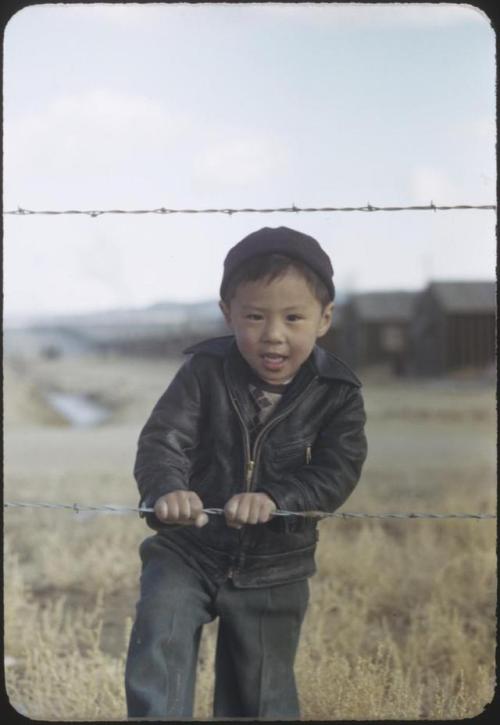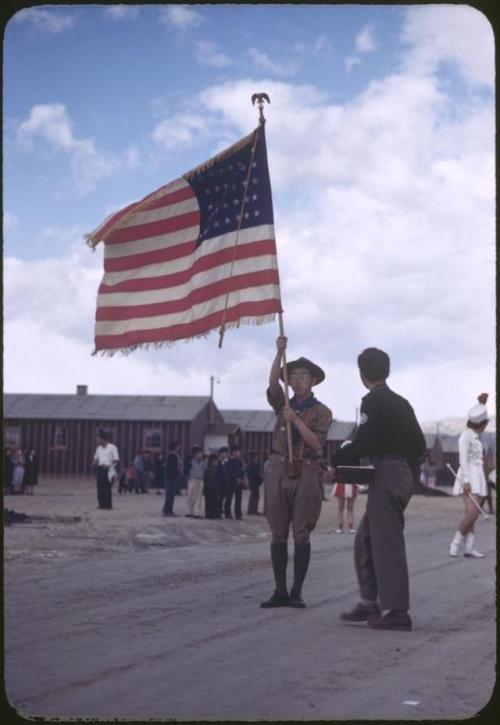samanthabeeismyqueen:The Colors of Japanese Internment I owe my existence, in part, to Japanese inte
samanthabeeismyqueen:The Colors of Japanese Internment I owe my existence, in part, to Japanese internment. After the attack on Pearl Harbor, in 1941, as anti-Japanese fervor gripped the U.S., my grandmother, Eiko Muto, became one of the roughly hundred and twenty thousand Americans of Japanese ancestry on the West Coast whom the U.S. government forced into relocation camps. Eiko, who was in her senior year of high school at the time, in Santa Clara, California, was sent with her younger brother and their parents to the Tule Lake Relocation Center, in northern California, one of the ten internment camps that held Japanese-Americans during the war. It was at Tule Lake that she met and married my grandfather. They left the camp in March, 1946; my father was born seven months later.My grandfather died before I was born, but my grandmother, now ninety-three and living in Los Angeles, still shares memories of her years at Tule Lake. Her stories, which she has told more willingly with the passage of time, paint a vivid portrait of camp life, and of the lasting effects of the sweeping governmental discrimination that uprooted our family. To me, her stories, like the iconic black-and-white photos of life in the camps by photographers like Dorothea Lange and Ansel Adams, have always felt somewhat unreal—like the distant history of an America far removed from my own. How did this happen? I’ve often thought after hearing my grandmother describe her years in the camp. And how did it happen to my family?Similar questions might have echoed in the mind of the internee Bill Manbo, a car mechanic from Riverside, California, when he picked up a camera to document his surroundings after months of captivity at the Heart Mountain camp, in Wyoming. Though internees were initially prohibited from bringing cameras into the camps, that rule was loosened at Heart Mountain in 1943. The photographs of another internee, Toyo Miyatake, who was sent to Manzanar, in California, and assembled a makeshift camera from a lens that he had smuggled inside, have become essential records of the incarceration. But of all the most famous images of Japanese internment by either internees or government-hired photographers, only Manbo’s were in color.Between 1943 and 1944, with a 35-mm. Zeiss Contax camera and Kodachrome film, Manbo, an amateur photographer, captured family portraits and scenes of everyday life at Heart Mountain, often set against the camp’s desolate but stunning natural surroundings. Many of the scenes resemble those captured by other photographers of internment, but the work’s rich colors lend it a rare immediacy. In one of the photos, Manbo’s wife, Mary, and young son, Billy, wearing a beige soldier’s hat, are perched on a rock formation, looking away from the camera toward the expansive camp below and the Big Horn Mountains in the distance. In other shots, Billy holds a red toy airplane and learns how to ice-skate; a diver splashes into a swimming hole; and inmates line up for a screening of the film “How Green Was My Valley” at a barrack that was converted into a movie theatre. In capturing jovial scenes of sumo matches and Bon Odori, a type of traditional folk dance, Manbo also depicted internees’ attempts at preserving parts of Japanese culture. Some of the shots, including several of the Bon Odori showing young girls in vibrant kimonos dancing alongside others clad in Western dresses, evoke the bicultural identity common among the country’s incarcerated Japanese-Americans, two-thirds of whom were U.S. citizens.Unlike Dorothea Lange, who documented the camps with a restrained but critical eye, Manbo, who died in 1992, largely avoided scenes that laid bare the indignities of internment: the crowded, dirty living spaces; the meagre meals; the endless monotony and waiting around—to be fed, to wash clothes, to use the bathroom, sometimes in communal restrooms that lacked partitions between toilets. The historian Eric L. Muller writes in his book “Colors of Confinement,” from 2012, in which Manbo’s images were published for the first time, that the photographer’s goal was “to document some semblance of an ordinary life in extraordinary circumstances, and to create for his young son a visual legacy of a normal childhood.” Yet a quiet current of protest crept into Manbo’s work. In one image, Billy, facing the camera, climbs onto the barbed-wire fence that surrounds the camp; behind him, a seemingly endless row of barracks recedes into the background. Billy, like my grandmother, wasn’t just an internee. He was a prisoner in his own country. For me, the rich colors of Manbo’s photos serve as a reminder that the injustices my family faced, which I had once envisioned only in grayscale, took place in the same vivid hues as the present, and that those injustices could easily repeat themselves today. -- source link
Tumblr Blog : glassceilingbreakers.tumblr.com
#japanese internment#photos




